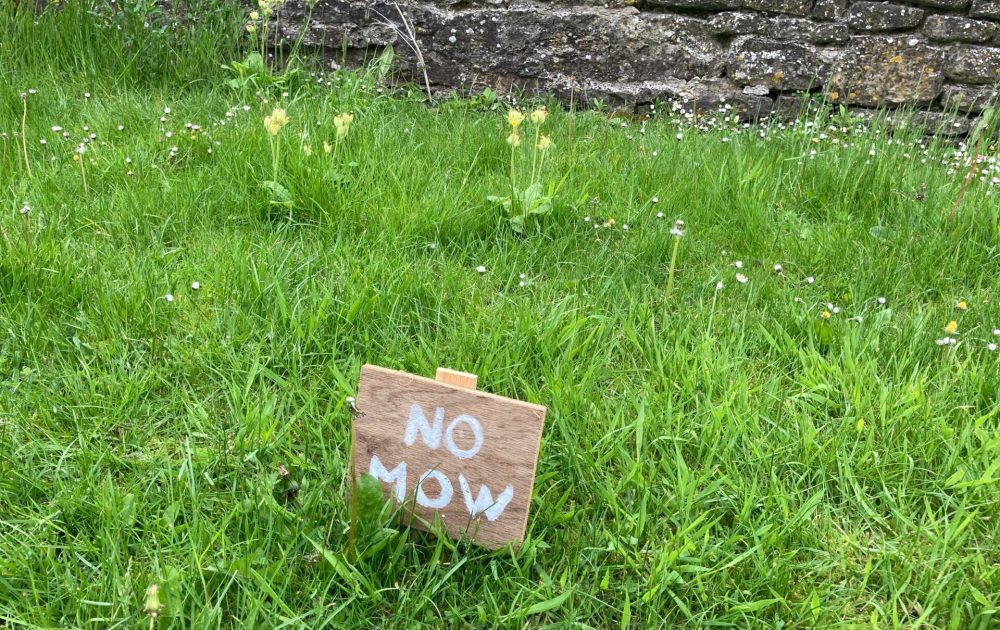Our test tells you which everyday chemicals you've recently come into contact with, and easy steps you can follow to reduce your exposure to them.
Chemical free garden ideas

This week sees the return of National Gardening Week just as temperatures finally start to rise! The Royal Horticultural Society’s theme this year is Knowledge is Flower’ designed to help demystify some of the myths and truths about gardening, and how to avoid common pitfalls for gardening novices and experts alike. It includes guidance about the best ways to fertilise your plants and how to choose peat free composts. But before you reach for lawn treatments and plant fertilisers, there are some good reasons to reconsider the use of chemicals in your garden and in public spaces, and the health effects they might have.
Let your grass grow for No Mow May
May sees the return of #NoMowMay a campaign to encourage us to leave the lawnmower in the garden shed throughout May. Its aim is to help the UK rebuild biodiversity of insects such as bees and other pollinators and plant species. According to the Journal Biological Conservation, 97% of British wildflower meadows have disappeared since the 1930s. We cut our lawns on average every two weeks in the UK, and to keep weeds at bay, many people use herbicide lawn treatments that use glyphosate. But when May ends, does that mean we should be aiming for perfect lawn again?
Changing your mowing regime can help to increase biodiversity in your garden. Cutting less often such as once a month will increase the pollen count of your lawn. When you do cut, choosing a higher blade setting will not to disturb the roots of ‘short sword’ grasses and plants such as daises, which will grow back quicker after a cut and encourage more nectar for insects. If you allow dandelions to grow, not only will they add a vibrant splash of colour, but they are also a good source of nectar for pollinators – just eight dandelion flowers produce enough nectar sugar to meet a bumblebee’s energy needs. You could try seeding some Yellow rattle which is a semi-parasitic plant that feeds off the roots of nearby grasses – so it’s a natural weed killer!
What are the health risks of pesticides and herbicides?
Chemicals sprayed onto lawns and plants remain active for many months and can release vapours and enter our water supplies via groundwater runoff. They can be absorbed via dermal contact or by ingestion, especially in areas where children might play such as parks and playgrounds. There are health concerns about the risk of exposure to chemical-based lawn treatments because many use glyphosate as the active ingredient to kill weeds; it is the most widely used herbicide in the world. Glyphosate has been classified as “probably carcinogenic” to human health by the International Agency for Reasearch on Cancer (IARC). For more information about the potential health risks read our guide to glyphosate .
Children are generally at a higher risk of health effects of exposure to pesticides due to their smaller bodies and developing organs, and because they play and crawl around on grassy areas, they are more likely to increase skin and mouth contact, e.g., toys, shoes, clothing, lawn furniture, or play areas. Herbicides and pesticides are also thought to be one of the reasons for the increase in bee mortality and insect decline.
Pesticide free alternatives for your garden and green areas
- Choose a wild area for your garden and leave it to thrive, or plant a meadow instead of grass in an area of your garden.
- Join #NoMowMay and choose an area in your garden and keep a count of plants and insects to help us understand regional changes in biodiversity more fully.
- Shorter grass is more prone to insects, disease and drought, so let it grow longer and choose a higher setting on your mower when you cut grass.
- Use organic fertiliser or make some DIY weed killer using ingredients like vinegar and salt/baking soda – there are plenty of recipes online!
- Pick out weeds by hand rather than by spraying them.
- Try to see weeds in a different light, many are great for wildlife and pollinators such as bees who love lawn flowers and weeds such as dandelions.
- Avoid artificial grass made from plastic. Exposure to the toxins it releases has been linked with health risks such as cancer. The RHS banned artificial grass in its garden shows last year.
- Find out if your district council has banned or pledged to ban the use of glyphosate in public areas. To check what’s happening in your area visit PAN UK.
- Join a community project to learn more about controlling weeds without using chemicals, such as the Weed Warrior scheme in Brighton and Hove.
- Pesticides and herbicides are widely used in public areas, so take another route when you see them being sprayed.
- Golf course greens use pesticides that can be inhaled from rising vapours and absorbed via skin contact when picking up golf balls and tees. Ask your local golf course if it adopts pesticide free practices or is willing to do so.